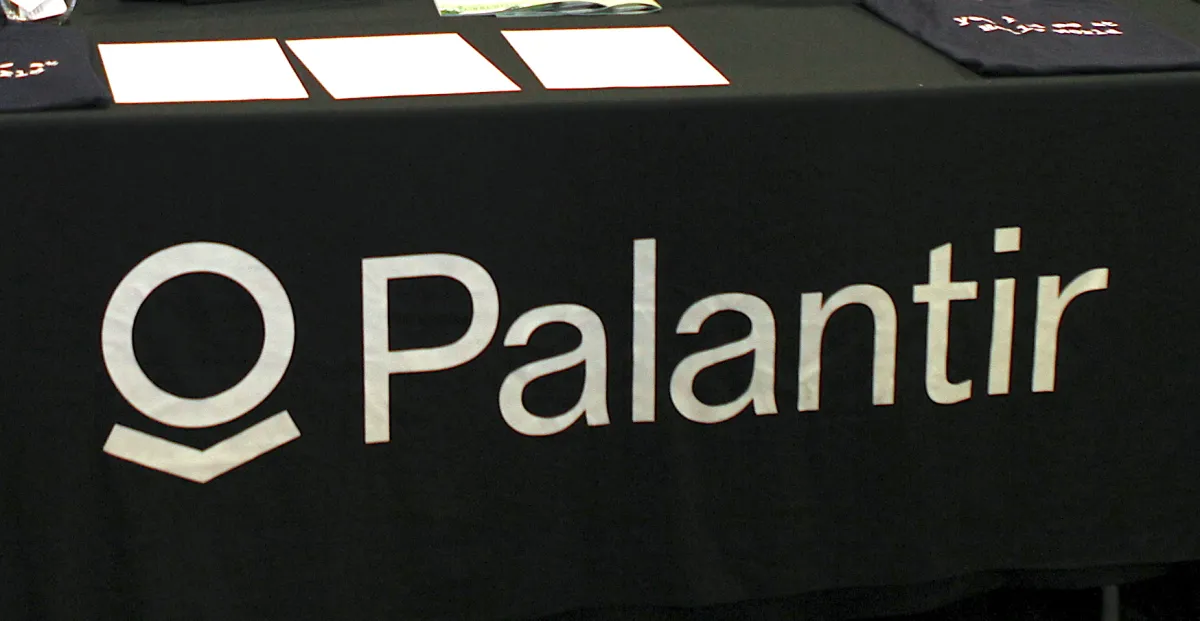The government’s embrace of Palantir is years in the making

There’s more attention on Palantir, and its work for the government, than ever before.
Activists have organized protests against the company’s work for the Israeli military, as well as its developing role at U.S. Immigration and Customs Enforcement. Under the Trump administration, the Department of Government Efficiency has made use of the company’s technology, and several federal agencies have brought Palantir on for more work. The company’s finances seem better than ever, with its stock price hitting record highs in recent months.
But inside the government, the focus on Palantir is nothing new, according to conversations with more than a dozen current and former federal civilian tech officials. Internal government discussions about the company, some of these sources say, are largely disconnected from the activists and critics sounding alarms about its customers.
U.S. agency officials aren’t likely to judge the company because of its work for an agency like ICE, said one former White House AI official who, like other sources in this story, was granted anonymity to speak more candidly. “If [officials] are making procurement decisions or system decisions in federal agencies, they likely have a strong confidence in law enforcement generally.”
Instead, questions about Palantir within government circles tend to center on concerns over the cost of the company’s products or potential difficulties in removing data from its systems. Those are concerns that Palantir pushes back on.
“No one who has actually used or researched Palantir would ever say this because it is too obviously untrue,” a company representative told FedScoop. “Our customers rely on us because Palantir’s products provide the most seamless integration with other data and software platforms, ranging from modern products to legacy data systems the government doesn’t want to upend. Our ease of integration is one of the biggest reasons customers choose Palantir.”
Still, apprehension hasn’t gone away under the new administration, and some government officials told FedScoop they’re now worried about potential extra pressure to work with Palantir. Other sources defended the company and said its approach is par for the course in the world of government technology.
What Palantir does
At its core, Palantir sells software that can help government agencies — and enterprise customers outside of government — process and analyze their data. Palantir has repeatedly emphasized that it is not a “data company,” and former employees have pushed back on the perception that the company is, on its own, collecting data about the public.
“It’s like taking a truck that’s full of mixed Legos,” said Leland Dudek, a former acting director of the Social Security Administration who volunteered to speak about the company in his personal capacity. “You have Legos that are big and small. [What] Palantir does is you dump those … into this special machine that automatically knows how to sort the Legos … or it can create a shape that you’ve asked it to create out of those Legos without you having to go through the manual labor yourself.”
Dudek, who said he worked with the company while serving on the Recovery Accountability and Transparency Board, called Palantir an “essential” tool for building non-obvious relationships within various sources of data. (A spokesperson for the SSA told FedScoop that before Frank Bisignano was confirmed as commissioner, the agency received a product demonstration from Palantir, but it is “not engaged in any contracting discussions” with the company.)
For a long time, one of the main criticisms of Palantir within the government was its highly closed approach, a former Treasury Department official told FedScoop. For years, the company has used “forward-deployed engineers” who would embed within government agencies, the person said. That approach meant that an agency could end up dependent on the company’s employees, and that its software didn’t “play well” with other systems an agency might be using, the person said.
But in recent years, Palantir has broadened its focus to also include working with other parties, the source said. When asked about the forward deployment model and investment in other trainings, certifications, and working with third-party IT consulting firms, the Palantir spokesperson said the company is “flattered that competitors and other companies are adopting the [forward deployed engineers] model (even if they use different titles to describe the role), which Palantir pioneered.”
Indeed, the company has spent the past few years expanding its partnerships. In 2022, Palantir partnered with GuideHouse, a business management consultancy used in government, on public sector work. GuideHouse declined to comment on its partnership with Palantir.
That year, Palantir opened a certification program for people within organizations using its Foundry platform. Last December, the company partnered with Booz Allen Hamilton.
Critically, Palantir has earned FedRAMP authorization, making it an appealing partner for companies like Anthropic, which announced it would work with the company on bringing its Claude AI chatbot to government. Kate Jensen, Anthropic’s head of sales, touted its work with Palantir at an event in Washington, D.C., earlier this month: “We partner with firms that government already trusts.”
Those partnerships have continued under the Trump administration. In March, only a few weeks after the start of the president’s second term, Databricks announced a strategic partnership with the company. The software and data analytics company is also used by federal agencies, including the Department of Homeland Security. The partnership with Palantir came after Databricks received new security authorizations for both defense and civilian work, a representative for the company told FedScoop.
Palantir also recently partnered with Accenture on government work and announced another deal with Deloitte.
Palantir and the Trump administration
Discussion of Palantir within the White House shifted from some skepticism during the Biden administration to almost “cult-like” admiration during the early days of the current Trump administration, one former White House official told FedScoop. Palantir, they said, is seen as an essential private-sector ally for accomplishing goals related to data linkage and cybersecurity.
Another former White House AI official told FedScoop that Palantir markets aggressively, and the debate over whether to use the company’s tech is now a “classic” fight among government leaders. Palantir is seen as better, though pricier, than most competitors, the source said, and the company often doesn’t win open bid contests it competes for.
People within the government talk about the inevitability of Palantir and the prospect that the tool could be used to replace laid-off tech workers, a former General Services Administration official told FedScoop.
Some have noted the presence of company alums in some top government technology leadership positions. The most notable example is Gregory Barbaccia, who spent 10 years at Palantir, including work on investigations and counterintelligence. As the federal chief information officer and the inaugural chief federal artificial intelligence officer, Barbaccia has a large influence in setting the tone for the federal government’s use of technology, and has said that deploying AI in government is one of his primary goals. The Office of Management and Budget, which his office sits within, did not respond to a request for comment.
Clark Minor, the CIO of HHS, formerly worked at Palantir, and other alums have joined the government, too, including Anthony Jancso, Akash Bobba, and Allan Mangaser.
David Sacks, the government’s AI and crypto czar, has invested in Palantir. Michael Kratsios, the director of the Office of Science and Technology Policy, was previously chief of staff to Palantir co-founder Peter Thiel.
“Palantir prides itself on hiring the world’s best engineers, many of whom choose to come to Palantir to support the government’s missions in national security, public health, and the public welfare of its citizenry,” the Palantir spokesperson told FedScoop. “Thus, it is no surprise that of the over 4,000 Palantir alums, a small handful now work in government service. This has happened throughout past democratic and republican administrations.”
Other government officials emphasized that increased talk of Palantir is part of a broader trend that began before the Trump administration. There was already critical momentum building toward using Palantir, said one current GSA official, in part because it was deployed widely in response to the COVID-19 pandemic. Within the government, the company has a positive reputation, which means that selecting Palantir doesn’t inspire a lot of pushback when choosing a vendor, they said. Still, in some oversight circles, there’s concern that the government is becoming too reliant on the company, the GSA person said.
Federal spending data show that government work with Palantir has grown in recent years, particularly under the Biden administration. Interest in the company’s technology has continued under the Trump administration, including through several civilian agency awards this year, such as those with the National Institutes of Health, the Justice Department, and NASA.
The State Department announced a desired blanket purchase agreement with Palantir this summer following a market research process that began under the Biden administration. “The State Department has been proud to partner with [Palantir] to modernize how we carry out America’s diplomacy domestically and around the world,” a State Department spokesperson told FedScoop.
At the Internal Revenue Service, there was a push to use Palantir to be the “Swiss Army knife” that solved all problems, said the former Treasury Department official.
DOGE wanted to use the company’s Foundry tool to deal with legacy technology challenges that have existed for decades, the person said, and the IRS had already been using Palantir for several years for its fraud detection work, as well as work done under the Office of Criminal Investigations. When a blanket purchase agreement used by the OCI was renewed, the scope was expanded so that the Office of Information Technology could then use the BPA for its own acquisitions.
“This would obviate the need for IT to perform its own competitive acquisition, which would traditionally include evaluating other vendor offerings against a set of defined requirements,” the person added.
The IRS did not respond to that claim, but another former Treasury official said that wasn’t surprising and is a common strategy for government procurement. Notably, Sam Corcos, a DOGE member who later became chief information officer of the Treasury Department, was a big fan of the technology company, the Washington Post previously reported, and pushed to expand its Biden-era work at the IRS.
That second former Treasury official emphasized that the interest in Palantir stemmed from the Trump administration’s more aggressive interest in data and artificial intelligence. While the agency had been focused on lessening its dependence on antiquated programming languages like COBOL, the person said, DOGE was highly interested in improving the agency’s approach to the “data layer.” While there were certainly concerns about vendor lock-in, other companies are also trying to make government agencies more dependent on their software, the person said.
Sources who worked at the Department of Homeland Security also took note of the agency’s interest in Palantir. One former agency official said it wasn’t surprising to see the increased use of Palantir at ICE, given its capabilities and the administration’s relationships with the company. Interest in Palantir came directly from Secretary Kristi Noem’s office, the Washington Post reported, and the agency later awarded the company more work, including for ImmigrationOS, a system to help ICE with deportations.
“What was shocking was the level by which the clear direction was to purchase software from a specific vendor even after these concerns and considerations were raised,” a former agency official said. “This is not to say Palantir is a bad technology; we would have been happy to have it available, but the cost and utter disinterest and clear discouragement from looking at other alternatives was truly remarkable. Had it not been unethical [to invest in the company], I would have bought Palantir shares because the level of capture was so evident.”
A DHS spokesperson said that while its “current engagement” with Palantir is for ICE, the agency has had a relationship with the company for 14 years.
“At the Department level, DHS looks holistically at technology and data solutions that can meet operational and mission demands. Vendors are evaluated against mission needs, cost, and compliance requirements, and DHS uses a wholistic process to identify the right capabilities, whether commercial off-the-shelf, government-developed, or vendor-provided,” the spokesperson said.
“Conversations with Palantir, like those with other technology companies, have occurred over multiple administrations. Cost and value are assessed through DHS’s acquisition processes in the same manner as with any other contractor,” they added.
In regard to its work for both Homeland Security and in Israel, a Palantir spokesperson said: “Our work with these clients dates back years, spans Democratic and Republican administrations and reflects how private and government customers know they can rely on Palantir for reliable support across their operations.”
Concerns about cost
Some civilian government officials say Palantir is too expensive for them to use.
The Federal Aviation Administration has, for several years, been using a Palantir system to help aircraft inspectors understand the safety history of aircraft and highlight potential issues for similar aircraft, a Transportation Department official said. The challenge with Palantir, the person said, is cost.
The Food and Drug Administration was trying to scale back its work with the company, a different person said, because of the price. The agency ultimately transitioned away from the service for infant formula supply tracking. Palantir did not provide a comment on this use case.
Another current government official said that some agencies have adopted the technology well. They added that the State Department and the Advanced Research Projects Agency for Health (ARPA-H) — the Department of Health and Human Services’ research and development arm — both have good use cases for the technology, and the Centers for Disease Control and Prevention is cautiously moving forward with a three-year plan that began before this administration and involved using the company’s technology. HHS components did not respond to requests for comment.
The Palantir Foundry system is a good system, but expensive, that current government official said, so it may be difficult to use in the long run. Similarly, Dudek said in his past experiences with Palantir technology, the systems could be significantly more expensive than alternatives. But the technology “delivers,” he argued, and doesn’t come with hidden labor costs.
In the meantime, Palantir seems to be on track to get more business, both from the government and from commercial enterprise customers.
“Palantir’s [U.S. government] work has been growing since the Biden administration and pales in comparison to our growth in the private sector,” a spokesperson for the company said. “In Q2 of 2025, Palantir’s government business grew 52%, but this growth was outpaced by our commercial growth in the same quarter, which was over 90% –– that obviously is unrelated to the government.”
“Was this because of Trump favoritism also?” they continued. “Of course not.”
Madison Alder and Miranda Nazzaro contributed reporting.






